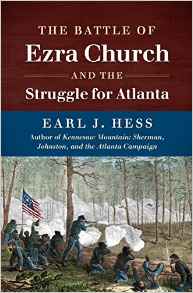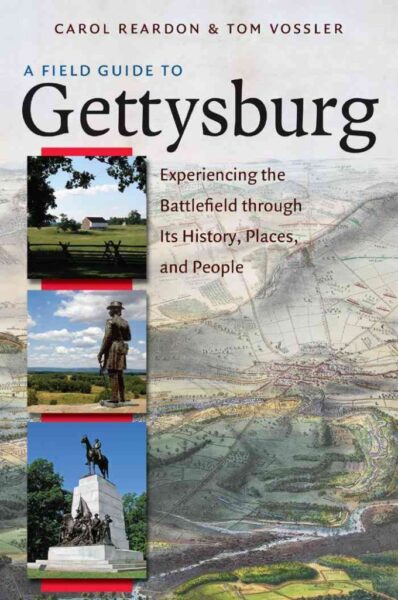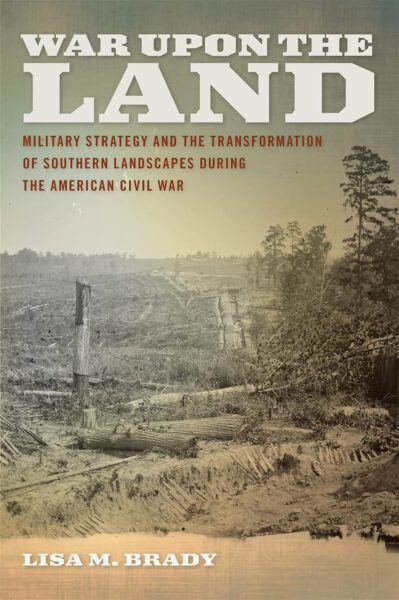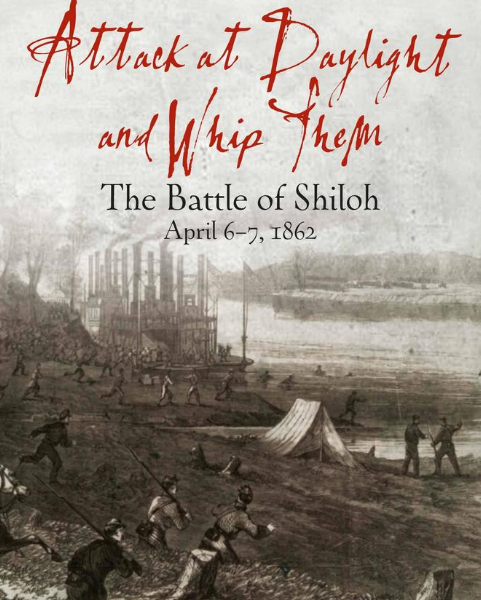The Battle of Ezra Church and the Struggle for Atlanta by Earl J. Hess. University of North Carolina Press, 2015. Cloth, ISBN: 978-1469622415. $35.00.
 Earl J. Hess has one of the longest resumes of any historian of the American Civil War, with works ranging from detailed multi-volume studies of field fortifications to a “new” military history of Union soldiers in combat to no less than two different major monographs on the rifle musket and Civil War tactics—never mind a plethora of detailed battle and campaign studies, the most recent of which is The Battle of Ezra Church and the Struggle for Atlanta. Under ordinary circumstances, this economical volume on a specific engagement during the Atlanta campaign would be seen as simply one more impressive brick in the still-growing scholarly edifice of a distinguished historian, but coming so soon after Hess’ provocative ‘call to arms’ of sorts to military historians in the learned journal Civil War History, the question of how battle studies (or “traditional” military history as a whole, to use Hess’ term) fits in with the larger academic study of the sectional conflict seems unavoidable. The nearly simultaneous appearance in Civil War History’s younger rival, The Journal of the Civil War Era, of another article calling military historians to the colors by Gary W. Gallagher and Kathryn Shively Meier only stoked further the lurid, if somewhat obscure flames of academic controversy that swept over (including some partisan incendiaries hurled by this reviewer) a small corner of the internet regarding the proper relationship between military and non-military historians. Nevertheless, Hess’ volume first deserves an assessment on its own terms.
Earl J. Hess has one of the longest resumes of any historian of the American Civil War, with works ranging from detailed multi-volume studies of field fortifications to a “new” military history of Union soldiers in combat to no less than two different major monographs on the rifle musket and Civil War tactics—never mind a plethora of detailed battle and campaign studies, the most recent of which is The Battle of Ezra Church and the Struggle for Atlanta. Under ordinary circumstances, this economical volume on a specific engagement during the Atlanta campaign would be seen as simply one more impressive brick in the still-growing scholarly edifice of a distinguished historian, but coming so soon after Hess’ provocative ‘call to arms’ of sorts to military historians in the learned journal Civil War History, the question of how battle studies (or “traditional” military history as a whole, to use Hess’ term) fits in with the larger academic study of the sectional conflict seems unavoidable. The nearly simultaneous appearance in Civil War History’s younger rival, The Journal of the Civil War Era, of another article calling military historians to the colors by Gary W. Gallagher and Kathryn Shively Meier only stoked further the lurid, if somewhat obscure flames of academic controversy that swept over (including some partisan incendiaries hurled by this reviewer) a small corner of the internet regarding the proper relationship between military and non-military historians. Nevertheless, Hess’ volume first deserves an assessment on its own terms.
The larger Atlanta campaign has certainly received ample attention from scholars, but Hess argues that individual engagements during the campaign, such as the Battle of Ezra Church on July 28, 1864, have not received the sort of in-depth scholarly treatment one associates with work such as Gordon Rhea’s multi-volume history of the Overland Campaign. Hess’ new volume is now the standard scholarly account of the crucial engagement that saw Atlanta’s Confederate defenders lose their final chance to regain the initiative from Sherman through aggressive counter-offensives. Hess argues that historians have generally overplayed the ease with which Oliver O. Howard’s Army of Tennessee repelled determined but uncoordinated assaults conducted by Stephen D. Lee’s corps in the Confederate Army of Tennessee. Nevertheless, Hess avoids revisionism for its own sake and, like most scholars, both Lee and his superior John Bell Hood compare poorly as military commanders when pitted against their Union counterparts.
For those interested in the battle itself, Hess’ new monograph has obvious value. However, Hess clearly intends to escape the narrow confines of simple antiquarianism, at least as defined by credentialed university-trained scholars. Hess argues that the battle was a closer-run affair than previous understood, and that Sherman’s campaign might have received a serious setback. If one goes further than Hess does, and explicitly endorses Atlanta’s fall as a “turning point” between Union victory and defeat, to use James McPherson’s locution in Battle Cry of Freedom, then one could weight this engagement with ponderous political importance indeed. Nevertheless, Hess remains too savvy and cautious a historian to make overly dramatic counterfactual claims, considering the relative balance of military power that existed between Sherman and Hood by this point of the campaign.
We are thus left with the dreaded “so what” question when assessing any Civil War battle study, which at their best combine the rhetorical grace of the novel with painstaking research in primary sources. For military historians, Hess places the engagement at Ezra Church in a larger context readily recognizable within the subfield. In line with his larger body of work, he argues that skirmishing played an important role in the Atlanta campaign, but that the increased range of the rifle-musket over smoothbores had little direct effect on the battle. And like most Civil War military history, he makes assessments of commanders, and the larger organizational contexts in which they worked. But it seems doubtful many non-military historians have great interest in any of these issues. And at least some would dismiss these scholarly questions as less significant than lines of inquiry more in the academic mainstream—e.g. research on the war’s memory, the workings of emancipation, etc. Some historians even find a willingness to write a battle study vaguely obscene. The fact that of all of Gary Gallagher’s grad students, only this reviewer wrote a dissertation self-identified as “traditional” (I actually prefer the term “operational”) military historian speaks volumes about the genre’s marginal status among academics.
Nevertheless, whatever the merits or lack thereof of these arguments, they swirl about in a scholarly field so fragmented that military history will always still find a place even amongst academic presses (Hess’ work is itself a product of the University of North Carolina’s Civil War America series). Military historians also have access to a broader trade publishing base, and they would be wise to recognize, as Brian Linn at Texas A&M University has pointed out, the distinct advantages they possess over academic counterparts whose higher status within the ivory tower is paired with a closer confinement to campus. Whatever the intellectual (and possibly moral) ambiguities created, the fact also remains that military historians can draw on funding streams associated with the tax-funded American military apparatus not generally available to scholars outside the field.
But in the end, divisions between military and non-military historians originate less from differences in institutional patterns of support, but from differing assumptions on bloodletting in war. Military historians invariably find themselves drawn to war’s violence: not necessarily to glorify it, but certainly at the very least to explain killing to the degree that it possesses some sort of rational logic (including the points at which chance comes into play and logic disappears)—whether via the discovery or creation of a coherent and plausible battle narrative, a focus on command decisions, or a more social scientific approach centered on technology or organizational culture. Like most effect works of history, Hess combines a variety of approaches in this monograph on one battle, but even as senior scholars such as George Rable and Kenneth Noe have imbued the battle study with approaches usually associated with cultural history, it is hard to imagine a graduate student acquiring a tenure-track position having written a battle study as a monograph.
I suspect that lack of interest among many non-military historians stems at least in part from unease toward the military historian’s assumption that martial violence in fact possesses a logic of sorts that goes beyond simple criminality. For many non-military academic historians, in attempting to explain violence, the military historian imposes on war a narrative or causal coherence it does not possess, while inscribing on it a moral legitimacy it does not deserve. In contrast, historians who work on subjects such as slavery at least implicitly condemn the injustices of the past by uncovering the sinister logic of the violence used in structures of power such as slavery. But on the battlefield, where all participants by definition spill the blood of their opponents, many academic historians can find no such straightforward moral logic, especially since various markers of military proficiency such as cohesion, adaptability, and a willingness to self-sacrifice can all be found in the service of both the Union and Confederate armies. Tightly focused forms of scholarship such as the battle study thus seem to be not only a poor use of a scholar’s time, but acquire the unseemly taint of militarism. For myself, military history’s greatest value is precisely in highlighting such uncomfortable moral ambiguities, but I am hardly a dispassionate observer.
What I write here is in large part based on supposition, however, since the reality is that non-military and military historians seem to generally not even talk very much with one another—such are the gaps between the groups. Reactions to Hess’ new volume will thus likely fall on this fault line, for better or for worse, with some historians valuing his scholarly contributions, and others wholly indifferent.
Wayne Hsieh teaches at the United States Naval Academy and is the author of West Pointers and the Civil War.




